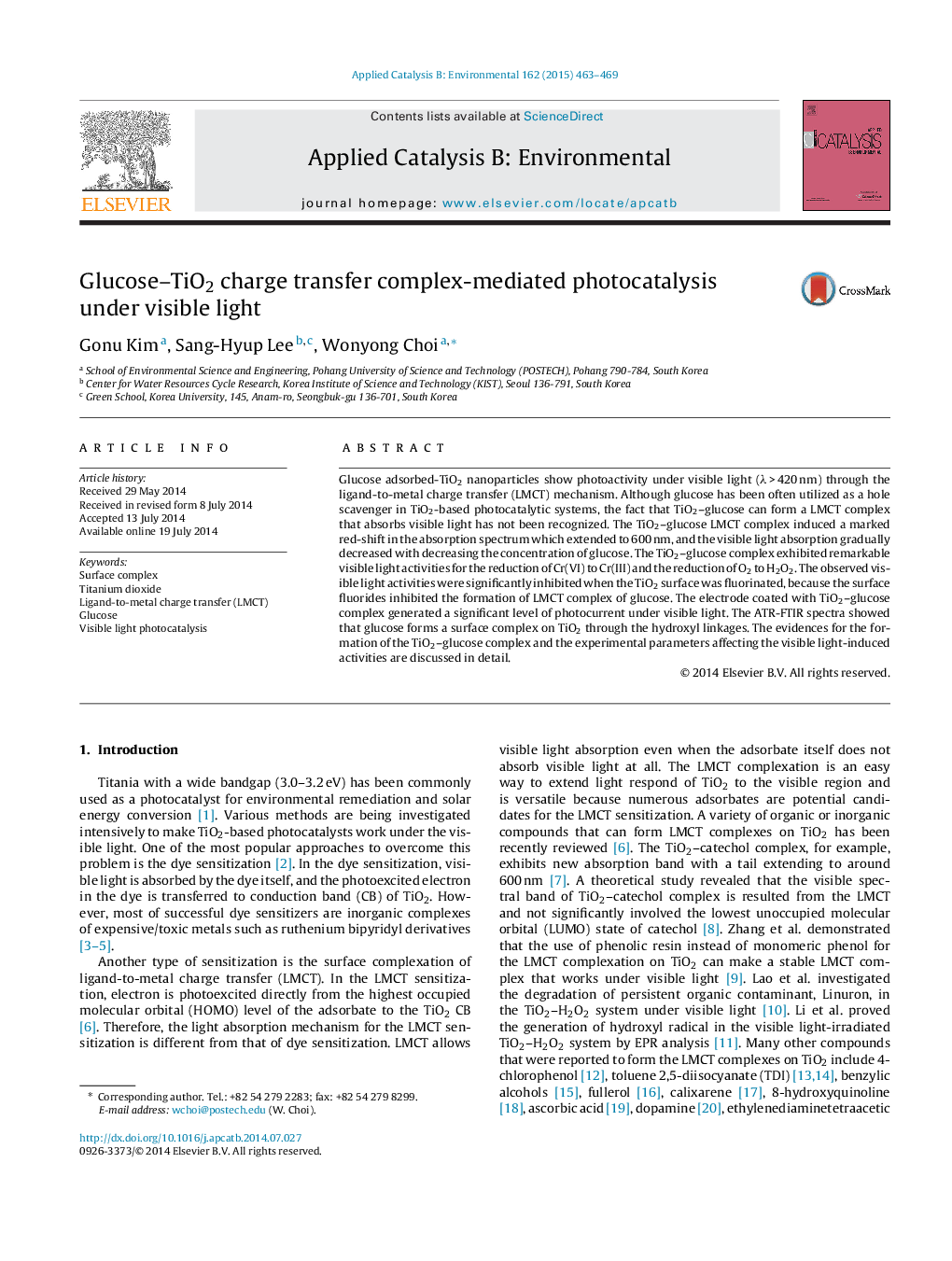| Article ID | Journal | Published Year | Pages | File Type |
|---|---|---|---|---|
| 45668 | Applied Catalysis B: Environmental | 2015 | 7 Pages |
•Glucose adsorbed on TiO2 formed a LMCT complex that absorbs visible light.•The formation of TiO2–glucose charge transfer complex was characterized.•The TiO2–glucose complex exhibited remarkable visible light activities.
Glucose adsorbed-TiO2 nanoparticles show photoactivity under visible light (λ > 420 nm) through the ligand-to-metal charge transfer (LMCT) mechanism. Although glucose has been often utilized as a hole scavenger in TiO2-based photocatalytic systems, the fact that TiO2–glucose can form a LMCT complex that absorbs visible light has not been recognized. The TiO2–glucose LMCT complex induced a marked red-shift in the absorption spectrum which extended to 600 nm, and the visible light absorption gradually decreased with decreasing the concentration of glucose. The TiO2–glucose complex exhibited remarkable visible light activities for the reduction of Cr(VI) to Cr(III) and the reduction of O2 to H2O2. The observed visible light activities were significantly inhibited when the TiO2 surface was fluorinated, because the surface fluorides inhibited the formation of LMCT complex of glucose. The electrode coated with TiO2–glucose complex generated a significant level of photocurrent under visible light. The ATR-FTIR spectra showed that glucose forms a surface complex on TiO2 through the hydroxyl linkages. The evidences for the formation of the TiO2–glucose complex and the experimental parameters affecting the visible light-induced activities are discussed in detail.
Graphical abstractFigure optionsDownload full-size imageDownload as PowerPoint slide
